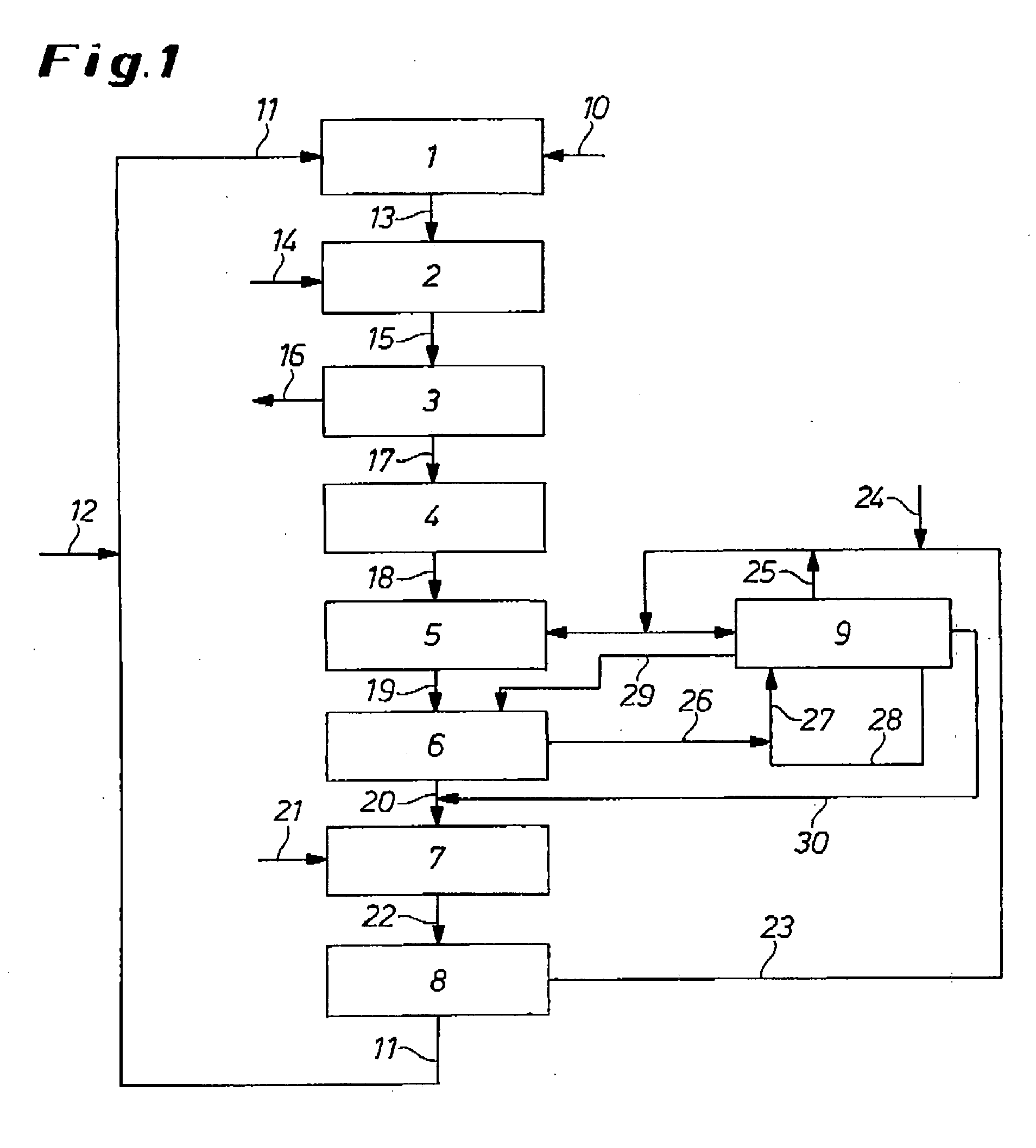Processes for the production of chlorine from hydrogen chloride and oxygen
a technology of hydrogen chloride and hydrogen chloride, which is applied in the direction of chlorine/hydrogen chloride, chlorine production, electrolysis components, etc., can solve the problems of high energy expenditure for hydrogen chloride desorption, and the general economic disadvantage of hydrochloric acid recycling in such processes
- Summary
- Abstract
- Description
- Claims
- Application Information
AI Technical Summary
Benefits of technology
Problems solved by technology
Method used
Image
Examples
example 1
[0094] A stream of 35.9 t / h purified hydrogen chloride from an isocyanate plant is divided into two partial streams. 29.5 t / h are fed to a HCl oxidation and 6.4 t / h to a HCl absorption. 29.5 t / h HCl are fed with 12.9 t / h oxygen (content greater than 99%) of a catalytic HCl oxidation. Oxidation takes place at 333° C. and 3.4 bar. The HCl conversion in the reactor is 85%. The gas mixture leaving the reactor is cooled to 100° C., the HCl condensed with the reaction water in a HCl absorption. A partial stream of the hydrochloric acid-depleted anolytic acid stream 28 coming from electrolysis is introduced into the hydrochloric acid 26 from the HCl absorption. 32.1 t / h of the hydrochloric acid-depleted analytic acid 28 with a HCl concentration of 12.2 wt. % is fed to HCl absorption. The cooled process gas stream (4.4 t / h HCl, 7.4 t / h oxygen, 24.4 t / h chlorine, 6.18 t / h water) is passed with 6.4 μl purified hydrogen chloride into the HCl absorption. In this HCl absorption unit, a 30 wt. % ...
example 2
[0097] As in Example 1, a purified HCl gas stream is fed at 35.9 t / h to the HCl oxidation with 100% oxygen excess, i.e., 15.7 t / h oxygen. The conversion is 85%, so that 5.4 t / h HCl, 9.0 t / h oxygen, 7.5 t / h water and 29.7 t / h chlorine leave the reactor. This process gas 19 is fed to a HCl absorption which is operated with a first partial stream of 177.8 t / h of a NaCl-depleted NaCl-containing solution (18.3 wt. % NaCl) coming from NaCl electrolysis. The water and hydrogen chloride of the process gas 19 is absorbed in this NaCl-containing solution. The stream leaving the absorption is composed as follows: 152.8 t / h water, 32.5 t / h NaCl, 5.4 t / h hydrogen chloride. This stream is then combined with the second partial stream of the NaCl-containing solution of 118.2 t / h, 26.4 t / h solid NaCl are added and it is again fed to the NaCl electrolysis. NaCl electrolysis consists of 1475 bipolar electrolysis elements per 2.71 m2 membrane surface. NaCl electrolysis is operated with anode half-shell...
PUM
| Property | Measurement | Unit |
|---|---|---|
| pressure | aaaaa | aaaaa |
| temperature | aaaaa | aaaaa |
| distance | aaaaa | aaaaa |
Abstract
Description
Claims
Application Information
 Login to View More
Login to View More - R&D
- Intellectual Property
- Life Sciences
- Materials
- Tech Scout
- Unparalleled Data Quality
- Higher Quality Content
- 60% Fewer Hallucinations
Browse by: Latest US Patents, China's latest patents, Technical Efficacy Thesaurus, Application Domain, Technology Topic, Popular Technical Reports.
© 2025 PatSnap. All rights reserved.Legal|Privacy policy|Modern Slavery Act Transparency Statement|Sitemap|About US| Contact US: help@patsnap.com


